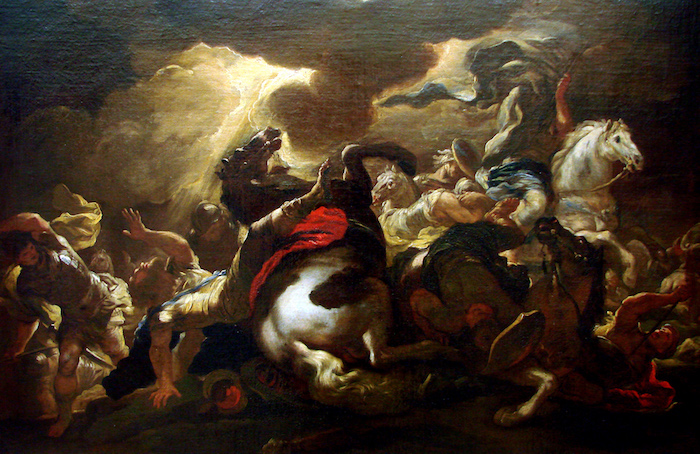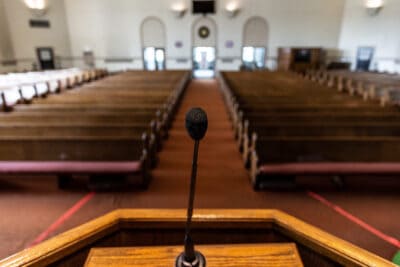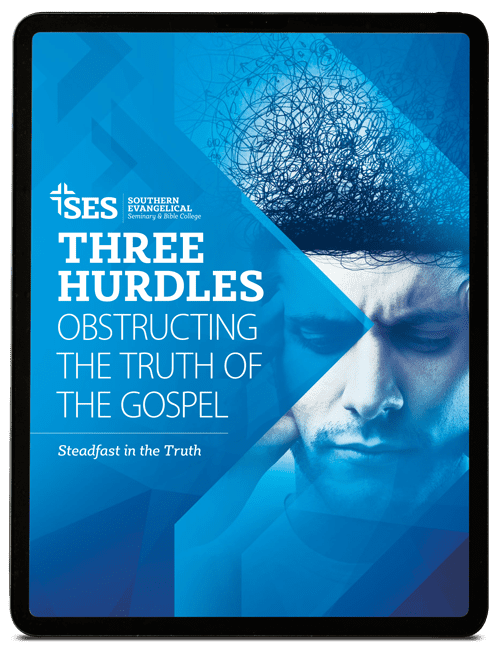By Dr. T. Brown,
From time to time we need to be reminded of several truths regarding the death, burial, and resurrection of Christ. As an example of this, in 1 Cor. 15:3-8 the Apostle Paul reminds the Corinthian Christians of truths he had first delivered to them when he had stayed in Corinth for eighteen months and founded the church there. Paul’s words to the Corinthian Christians are still important to us regarding the death and resurrection of Christ this Easter season. Let me discuss these truths for a moment with you.

First, Paul reminds the Corinthians of the truth that Christ died. In 1 Corinthians Paul writes, “For I delivered to you first of all that which I also received: that Christ died” (1 Cor. 15:3). When we read the Gospel accounts, we can easily see the great pain that was experienced by the followers of Jesus because of His death; some left Jerusalem (Lk. 24:13) while others remained but went into hiding (Jn. 20:19). The fact that these reactions to the death of Christ do not present the followers of Jesus in the most favorable light is further evidence of their truthfulness. It is a fact of history that Christ died, and the death of Christ is a sine qua non condition for the resurrection of Christ; there can be no resurrection without there being first death.
Second, Paul reminds the Corinthians of the truth that Christ was buried. In 1 Corinthians Paul writes, “He [Jesus Christ] was buried” (1 Cor. 15:4). It is the case that burial is reserved almost exclusively for the dead, and thus the truth that Christ was buried tends to further authenticate the truth of His death. Further, preparations for burial were made to the body of Jesus by either his disciples or by those who were well acquainted with Him (Jn. 19:38-42). We read elsewhere that not only was Christ buried, but also that once He was laid in His tomb, it was made as secure as was known how by the Pharisees and the chief priests (Mt. 27:65).
Third, and finally, Paul reminds the Corinthians of the truth that Christ, following His death and burial, was raised. In 1 Corinthians 15 Paul writes,
“[Christ] rose again the third day according to the Scriptures, and that He was seen by Cephas, then by the twelve. After that He was seen by over five hundred brethren at once, of whom the greater part remain to the present, but some have fallen asleep. After that He was seen by James, then by all the apostles. Then last of all He was seen by me also, as by one born out of due time”
(1 Cor. 15:4-8). After Paul reminds the Corinthians of the truth that Christ was raised, he proceeds to identify the six eyewitnesses as evidence that makes the truth of the resurrection undeniable.
- Paul presents Peter as the first eyewitness to the resurrected Christ (1 Cor. 15:5). We know from Luke that by the time the disciples returned to Jerusalem from Emmaus, they found Peter had already seen the resurrected Jesus (Lk. 24:33-34). Peter was an Apostle of great prominence, for Paul mentions elsewhere he was the Apostle who had taken the gospel to the circumcised (Gal. 2:7-8) and seemed to Paul to be a pillar (Gal. 2:9). As a result Peter had great respect, and his being an eyewitness was important.
- Paul next presents ‘the twelve’ as eyewitnesses to the resurrected Christ, who were gathered together on Resurrection Sunday (Jn. 20:19-20)
- The original twelve would certainly know the resurrected Christ if he appeared before them and were very aware of the death and burial of Christ. They had hidden out of fear (Jn. 20:19) and nothing less than the Lord they had served for three years living again before their eyes would have dislodged them from their condition. It was thus very important that those who remained and held Apostolic office from the beginning were witnesses to the resurrected Christ, for they had closely served Him.
- Paul presents five hundred brothers in Christ as eyewitnesses to the resurrected Christ(1 Cor. 15:6) and specifies that these men all saw the resurrected Christ at one time. Although some of these by then ‘have fallen asleep’, the greater part of them remained and was thus available to testify of having seen the resurrected Christ. We do not have another obvious mention in the Scriptures of the resurrected Christ appearing to five hundred men, but that does not cast any doubt on its having occurred, for it is the case that Christ has said He would appear before them in Galilee following His resurrection (Mt. 26:32). The angel at the tomb also told the women who had come early in the morning to “go quickly and tell His disciples that He is risen from the dead, and indeed He is going before you into Galilee; there you will see Him” (Mt. 28:7). The great number of eyewitnesses, many of them still alive, who all collectively saw the resurrected Christ and saw Him at one time, is great evidence to the truth of the resurrection of Christ.
- The same can be said of the fourth eyewitness Paul presents to the resurrected Christ, James. James, along with Peter and John, seemed to Paul to be a pillar (Gal. 2:9), and thus like Peter, he had great respect. The fact that James was an eyewitness was significant.
- The fifth eyewitnesses Paul presents as evidence for the resurrected Christ is a group he describes as ‘all the Apostles’ (1 Cor. 15:7). This group includes ‘the Twelve’, but is not be limited to ‘the Twelve’. ‘All the Apostles’ would then be composed of some who were not part of ‘the Twelve’ but were nonetheless sent out by Christ. Thus, like ‘the Twelve’ it was very important that those who had been sent out by Christ were witnesses to the resurrected Christ, for they had served Him too.
- Finally Paul presents himself as being the sixth eyewitness to the resurrected Christ.When Paul was Saul, he was not a believer of Christ and was in fact someone who was hostile to Christians (Gal. 1:13). When he encountered the

La Conversion de Saint Paul by Luca Giordano (1690), Museum of Fine Arts of Nancy. resurrected Christ on the Damascus road, he was changed. Evidence of this change is the testimony of the early Christians that “he who formerly persecuted us now preaches the faith which he once tried to destroy” (Gal. 1:23). Paul’s being an eyewitness of the resurrected Christ is very important because of Paul’s changed life that resulted from seeing the resurrected Christ.
All of these truths concerning the death, burial, and resurrection of Christ, found in 1 Corinthians 15:3-8, were received by Paul prior to when he wrote 1 Corinthians and were then delivered by him to the Corinthians when he was on his second missionary journey. Here in 1 Corinthians Paul is not delivering these truths to the Corinthians for the first time, but reminding the Corinthians of what he had already delivered to them. Paul’s reminder to the Corinthian Christians is also a reminder to us today that this Easter season we can be confident of the truths concerning the death, burial, and resurrection of Christ, and we can joyously celebrate the resurrection of Christ who has been “declared to be the Son of God with power according to the Spirit of holiness, by the resurrection from the dead” (Rom. 1:4).







